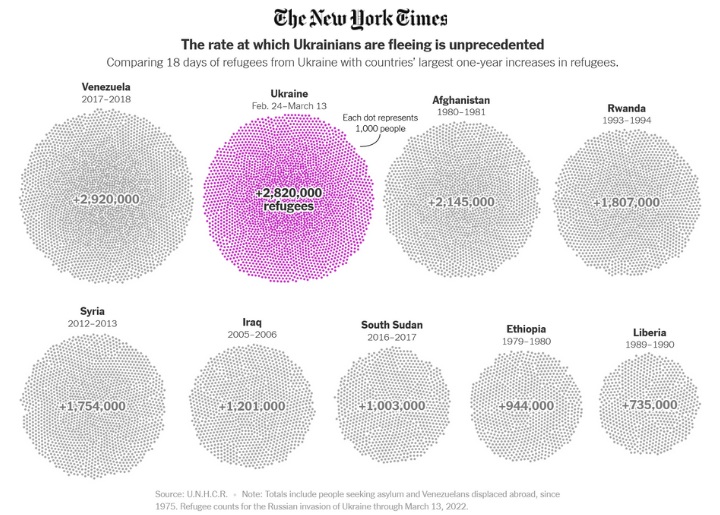

GIJN’s Data Journalism Top 10: Populism Popularity, DataViz Pedagogy, National vs. Local Media, German Migration
What’s the global data journalism community tweeting about this week? Our NodeXL #ddj mapping from April 29 to May 5 finds @zeitonline mapping German migration post-reunification, @FILWD pointing out the gaps in current data visualization teaching syllabi, @AlJazeera launching its data journalism introductory guide, and @WSJ highlighting the stark divide between national and local media in the United States.
Mapping German Migration
Zeit Online analyzed and visualized the data of approximately six million internal relocations in Germany after the country’s reunification from 1991 to 2017. It also highlighted the consequences of the exodus of about 3.6 million people, almost a quarter of the original population in East Germany, from the East to the West.
Gaps in DataViz Pedagogy
Enrico Bertini, host of the Data Stories podcast, outlined several concepts that he feels are lacking in the teaching of data visualization, including ideas on data transformation, sorting and uncertainty.
Data Journalism Intro
Al Jazeera produced a concise and practical introduction to data journalism using case studies from Arab media. It has sections on dispelling myths about data journalism, getting data, cleaning and analyzing data, as well as delivering your story.
Divide Between National/Local Media
The Wall Street Journal examines the US news industry and highlights a stark divide between big national players and small local outlets. Local media have been hardest hit by tech giants siphoning ad dollars away and are in danger of vanishing.
https://twitter.com/millie/status/1125080608429019137
Storytelling With Numbers
Data viz expert Alberto Cairo talks about the key to the future of data journalism and possible innovations in borrowing techniques from other fields, such as film documentaries and video games.
New Digital Magazine
A group of designers, programmers and researchers formed Parametric Press to showcase interactive and dynamic writing. The first issue Science + Society is out now and each article comes with its own open source code, digital object identifier and an offline archive to preserve the article.
Populism’s Popularity
Where are populist parties well received in the European Union? Der Spiegel analyzed 28 European countries and shows where populism has won the public’s votes in the past 20 years. Data on Github. (In German.)
Analyzing Child Abuse Data
Data Stories Pakistan analyzed police records on child rape and abuse cases since 2017 and found a worrying number of 2,841 child sexual abuse cases reported.
GoogleSheets4
Googlesheets4, by Jenny Bryan, provides an R interface to Google Sheets via the Sheets API v4. It is a reboot of the existing googlesheets package.
https://twitter.com/angelozehr/status/1123567426065637377
People to Follow
Looking for inspiration on Twitter? The Wire’s Aditya Jain suggests you to follow a list of people doing cool data viz and visual journalism stuff.
https://twitter.com/whaleandpetunia/status/1124551378410409985
Thanks, once again, to Marc Smith of Connected Action for gathering the links and graphing them. The Top Ten #ddj list is curated weekly.
 Eunice Au is GIJN’s program coordinator. Previously, she was a Malaysia correspondent for Singapore’s The Straits Times, and a journalist at the New Straits Times. She has also written for The Sun, Malaysian Today and Madam Chair.
Eunice Au is GIJN’s program coordinator. Previously, she was a Malaysia correspondent for Singapore’s The Straits Times, and a journalist at the New Straits Times. She has also written for The Sun, Malaysian Today and Madam Chair.








